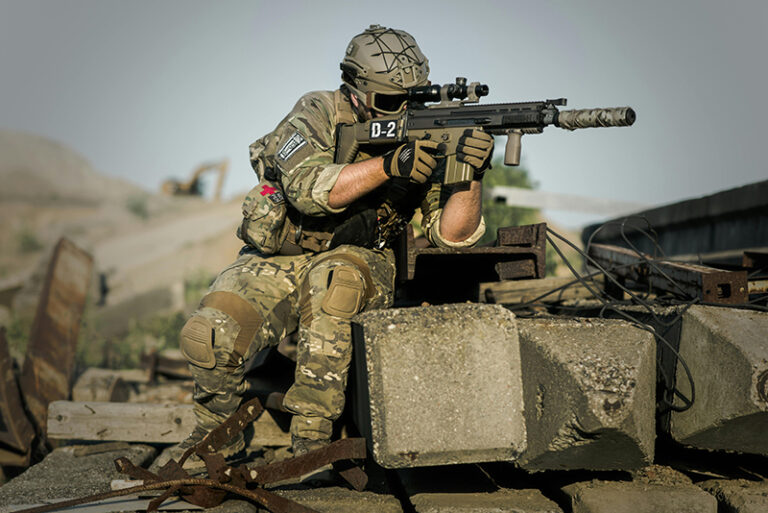smARt Multifunction tExtiles for integrated Soldier Systems
The overall objective of ARMETISS is to develop a full system of smart clothes and equipment for soldiers through the study and maturing of the most relevant textile-based advanced technologies, and the design and prototyping of a multi-layer and multi-functionalized concept which will integrate these technologies to demonstrate enhanced soldiers’ protection, comfort and operational capabilities.
Objective 1: Optimise soldiers’ performance by providing safe, reliable and ergonomic solutions
Objective 2: Sustain combat effectiveness and well-being of soldiers for extended periods in austere, isolated, ambiguous, rapidly evolving environmental extremes
Objective 3: Increase interoperability of smart and multifunctional components, textile technology and materials Evaluation

The main outcomes of ARMETISS will be:
• A comprehensive set of harmonised user systems and technical requirements, through a holistic consideration of soldiers’ needs and user requirements;
• The definition of the most relevant enabling textile-based technologies;
• The design of a coherent, integrated solution specifically adapted to soldiers’ requirements and severe environmental conditions;
• The design and demonstration of a wide range of textile-based functionalized modules, with the integration of several advanced capabilities including thermoregulation, physiological monitoring, wearable human-machine interfaces (HMI), and soldiers’ geopositioning;
• The delivery and the testing of a comprehensive set of prototypes, in the laboratory and representative combat conditions.
In the project, ENSAIT is involved in:
WP3 STUDIES OF ENABLING TECHNOLOGIES FOR SPECIFIC AND ADDITIONAL FUNCTIONAL REQUIREMENTS (M3-12)
T3.1 Smart Textiles for soldier’s physiological monitoring & cognitive state
ENSAIT will (i) Study the concept of an undergarment for soldier physiological monitoring, based on integrated ECG measurement and (ii) study the optimal integration and connections of electronic components to textile structures, to guarantee the reliability of the monitoring system and its functioning in harsh military conditions of use
WP5 DESIGN OF FUNCTIONAL MODULES (M12-M24)
T5.2 Modules for soldier’s physiological monitoring
ENSAIT will (i) design the architecture of an undergarment dedicated to soldier physiological monitoring through ECG measurement, including all the subsystems and consideration of the environment of the outfit, (ii) design the reliable ECG dry textile electrodes and (iii) the associated connectors and antennas for data and power transmission and (iv) deliver a first implementation through a Proof-of-Concept (PoC)
WP7 PROTOTYPING OF MULTIFUNCTIONAL SOLUTION (M24-30)
T7.1 Prototyping of multifunctional solution
This task is dedicated to prototyping a multifunctional solution, that can adapt to physical or environmental changes. In this task, the modules from WP5 will be integrated into one or more prototypes forming a soldier system. This means that an operational beneficial subset of modules will be combined in a prototype to be tested in different environments. This ensures that all useful modules are integrated and the prototyping and testing will be done on coherent systems. The system integration will not only consider the prototypes of modules but also the integration of common combat clothing and equipment of soldiers (load carriage equipment – pouches and vests, protective equipment – body armour, helmet, boots). The solution supposes to combine layer 1 and layer 2 of the ARMETISS designed multifunctional soldier system which will be tested in WP8. ENSAIT will realise a prototype for undergarment dedicated to soldier physiological monitoring through ECG measurement
Financing: European defense fund
Start: 2023 – Duration: 36 months
Contacts in Gemtex :
Link to European website
Partners:
The consortium has gathered 18 partners and 3 subcontractors, from 7 EU countries (Czech Republic, France, Germany, Italy, Poland, Portugal, and Spain) and 1 associated country (Norway). Within them, there are 7 RTOs, 4 large enterprises, 2 midcaps, 7 SMEs and 1 cluster.